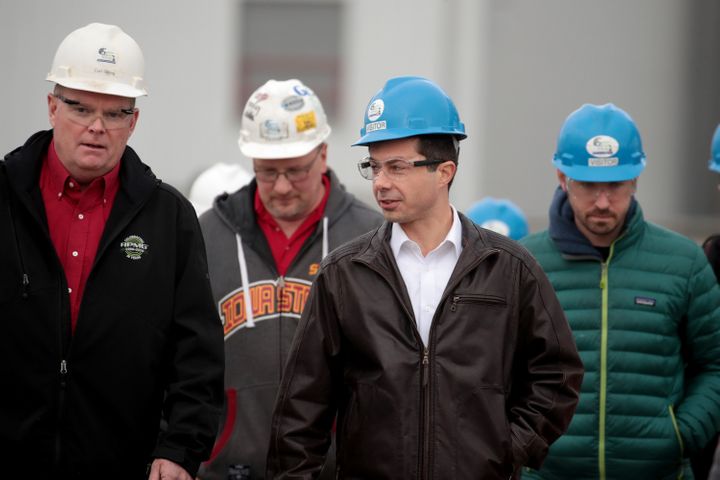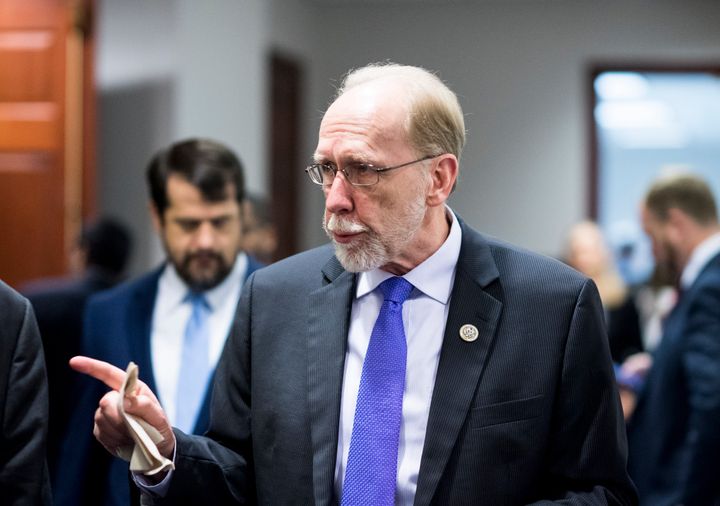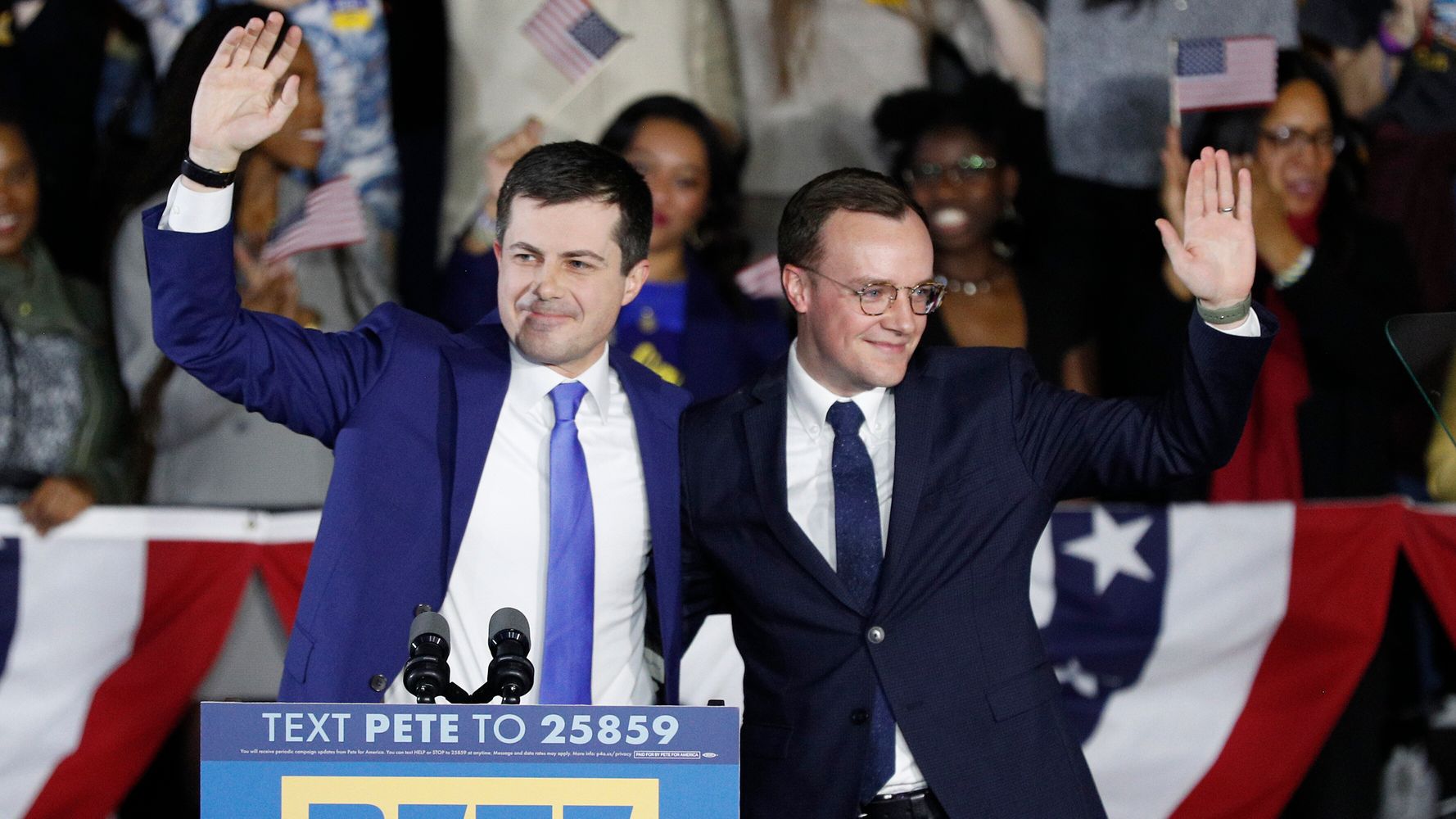[ad_1]
Scott Matter, a semi-retired corporate PR strategist, has held high-level positions on Republican campaigns from Iowa Sen. Chuck Grassley’s 1986 re-election bid to Sen. Bob Dole’s 1996 presidential run.
But after President Donald Trump’s election in 2016, Matter had enough of the GOP and the political polarization he believes has intensified under Trump. He found in former South Bend, Indiana, Mayor Pete Buttigieg a candidate welcoming “future former Republicans” with open arms.
“I was looking for somebody who can turn the page from where we’re at,” Matter said, citing Buttigieg’s optimistic message.
Matter joined hundreds of other Buttigieg supporters to attend a two-day caucus training in Des Moines following the Liberty Justice Celebration dinner at the start of November.
Matter went on to serve as a precinct captain for Buttigieg on caucus night, where he estimates that the number of Buttigieg volunteers ran 40 deep. Together they turned Buttigieg from the third-place candidate in the first alignment in their precinct into a narrow winner in the realignment by persuading caucus-goers backing Minnesota Sen. Amy Klobuchar (D), who was not viable, to join their side. It’s a pattern that repeated itself statewide, where Buttigieg picked up more voters from the first alignment to the final one than any other candidate.
Matter’s experience embodies the factors that propelled Buttigieg to his narrow lead in the Iowa caucus delegate count, defying pre-caucus polls that showed him trailing both Sen. Bernie Sanders (I-Vt.) ― who ended up winning the popular vote ― and former Vice President Joe Biden, whose fourth-place finish has raised serious doubts about his candidacy. The performance fueled a surge for Buttigieg in New Hampshire ahead of Tuesday’s primary, though he still trails Sanders in an average of public polls.
Several Iowa Democrats who spoke to HuffPost about Buttigieg’s performance said his success is a credit to the moderate message that appealed to newcomers like Matter; his investment in a sophisticated field program, particularly in the state’s many rural counties; his profile and style as a midwestern mayor; and ample campaign cash to leverage all of those strengths.

Relentless Attention On Iowa’s Rural Counties
When Buttigieg embarked on an on-record bus tour across a rural slice of Northern Iowa in early November, it was clear that he inspired particularly high levels of interest in the older, more traditional communities outside of Iowa’s major metropolitan areas. For example, in the city of Decorah, which has less than 8,000 people, he drew a capacity crowd of 1,000 people on a Saturday night. That excitement in his candidacy did not let up: Buttigieg drew an estimated 350 people for a town hall in 15,000-person Newton on a weekday afternoon in mid-January.
Appeal in rural areas is disproportionately important in the Iowa caucuses where candidates can win the majority of state delegates without winning the majority of the statewide vote. The state’s 1,678 traditional precincts generally overstate the importance of rural areas by granting weight to so many low-population communities.
As of Monday, with some challenges to results outstanding, Buttigieg was ahead in 59 of Iowa’s 99 counties. That figure includes 20 out of the state’s 31 counties that flipped from former President Barack Obama in 2012 to Trump in 2016, according to a HuffPost analysis of official results.
Buttigieg’s success in rural Iowa was an outgrowth of his strategy to deliberately court Democrats in those areas. He employed over 170 staffers in Iowa, the vast majority of them worked as organizers in the campaign’s 34 field offices in far-reaching corners of the state.
Buttigieg led or tied the field in the number of field offices in each of the state’s four congressional districts, according to an analysis conducted by FiveThirtyEight.
Sanders, by contrast, whose campaign said it employed over 260 people in the state, had two fewer field offices than Buttigieg in the 1st Congressional District, five fewer in the 2nd, four fewer in the 3rd, and one fewer in the 4th. (The Sanders campaign maintains that its field investments went further because of the size of its volunteer force.)
He had a really good ground game in Iowa.
Steve King, Chairman, Kossuth County Democratic Party
And Buttigieg’s campaign adjusted to accommodate his momentum in rural areas. Internal polling showed Buttigieg’s support rising in Republican-leaning Western Iowa in the final weeks before the caucus, according to the campaign. The campaign responded by sending an additional 20 field organizers to reinforce its contingent of 30 organizers who were already on the ground in the region.
“He had a really good ground game in Iowa. He had good organizers,” said Kossuth County, Iowa Democratic Party Chairman Steve King, who caucused for Klobuchar and is not related to his congressman, Republican Rep. Steve King. “That was their number one thing.”
Buttigieg himself showed up in rural counties in Western Iowa more often than the rivals closest to him in the polls.
In the rural 4th district, where Kossuth County is located, Buttigieg topped Klobuchar for the most in-district candidate events, according to FiveThirtyEight. After Klobuchar, who never reached the top polling tier, Biden, Buttigieg’s closest rival in the district, trailed him by 15 events.
Klobuchar was the only candidate to rival Buttigieg’s outreach in the rural precincts of Western Iowa, but she lacked his campaign resources, according to J.D. Scholten, a Democratic congressional candidate in Iowa’s 4th.
Scholten, who has refused to say for whom he caucused, ran a caucus of 12 people in rural Danbury. Although Sen. Elizabeth Warren (D-Mass.) bested Buttigieg in the precinct thanks to a coin toss, Buttigieg demonstrated his crossover appeal: Three of the people who caucused for him were former Republicans, Scholten said.

The Rust Belt Mayor With Midwestern ‘Humility’
Buttigieg has been mocked by Biden and online commentators for treating his tenure as the chief executive of a city of about 100,000 people as if it simultaneously conferred relevant governing experience and inoculated him from the corrupting effects of service in Washington.
He spoke of being able to walk to cornfields from his South Bend home and being more in touch with the “American Heartland” than his rivals ― a characterization that critics derided for valorizing predominantly white parts of rural America.
But behind the headline-grabbing remarks, Buttigieg was highlighting his credentials as the self-styled turn-around artist of a post-industrial city, which has struggled since the 1960s due to the shuttering of the Studebaker automobile plant and other manufacturing facilities.
In the 30-second ad, “Heart,” which aired over 600 times in Iowa in a 3-week period in January, South Bend residents praise Buttigieg for his work helping the city recover after the flight of manufacturing jobs.
“He has a heart for our city ― and I think he’ll show the same heart for our country,” a South Bend resident says at the conclusion of the video.
Rep. Dave Loebsack, an Iowa Democrat who endorsed Buttigieg in January, said he saw the message of post-industrial revival resonating in the blue-collar manufacturing towns in his district, particularly those adjacent to the Mississippi River.
“He’s a guy who can talk to farmers and he can talk to factory workers … He’s a good listener,” Loebsack said, pointing to what he characterized as Buttigieg’s “humility.”
“I don’t want to slam New Yorkers or Californians or anything like that, but I think that is part of what it means to be a midwesterner,” he added.

Courting Black Iowans?
Ads like “Heart” doubled as a message to Iowa’s small but significant Black community, which is concentrated in cities like Waterloo where economic development is still a pressing concern. All of the South Bend residents featured in the ad are Black.
Waterloo Mayor Quentin Hart was one of several Black Iowa officials who endorsed Buttigieg prior to the caucuses, including Iowa City Mayor Bruce Teague, state Rep. Phyllis Thede and former state Rep. Deb Berry.
Hart met Buttigieg more than a year and a half before the caucuses at a municipal economic development conference. Hart said they’ve talked about boosting job prospects for minorities, improving city life and repairing decaying infrastructure.
“Within 30 minutes of me meeting him, we were talking about parallels between our cities,” Hart said. “I saw sensitivity to being in a place where you have a significant minority population.”
In particular, Hart valued Buttigieg’s Douglass Plan to reduce racial inequity. And while Hart acknowledged the controversy surrounding allegedly racist practices in South Bend’s police department, he held up Buttigieg’s claim that Black poverty in the city halved under Buttigieg’s leadership. (More reliable figures show that the decline was closer to 6%, according to a Washington Post fact check that gave Buttigieg “three Pinnochios” for the claim.)
I saw sensitivity to being in a place where you have a significant minority population.
Quentin Hart, Mayor of Waterloo, Iowa
It’s hard to say how much of a difference Buttigieg’s Black outreach made. Sanders won 43% of Iowa’s non-white caucus support, compared with 15% for Buttigieg, according to a CNN entrance poll.
But the friendship with Hart could indicate Buttigieg’s broader investment in a network of local support.
That outreach came in the form of modest cash contributions to Iowa’s county-level Democratic parties. He contributed $7,350 to 14 county parties in the final quarter of 2019, including $1,000 to the local party in Black Hawk County, where Waterloo is located. Some of the money was evidently the price of admission to campaign events attended by multiple candidates, but when asked about it, the Buttigieg campaign characterized it as support for local party infrastructure, implicitly acknowledging that it went beyond covering event costs.
Ashley Vanorny, a city councilwoman in the Democratic bastion of Cedar Rapids, caucused for Warren. But Vanorny came away impressed with the Buttigieg campaign’s attentiveness, noting how they kept in touch with her even after she committed to another candidate.
She also saw Buttigieg’s calm tone and relatively moderate health care stance resonating with her neighbors. Indeed, Buttigieg tied Sanders among caucus-goers for whom health care was their top issue, even as 57% of those same Iowan Democrats said they favor Sanders’ single-payer health care system over Buttigieg, according to a Washington Post entrance poll.
“He fine-tuned his messaging to relate to Iowans,” she said.
CORRECTION: An earlier version of this story incorrectly stated that Buttigieg won the state delegate count. He is ahead, but the Associated Press has not yet declared a winner in the race.
Calling all HuffPost superfans!
Sign up for membership to become a founding member and help shape HuffPost’s next chapter
[ad_2]
Source link

